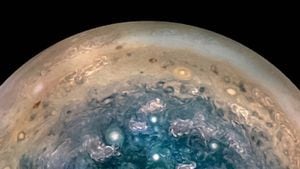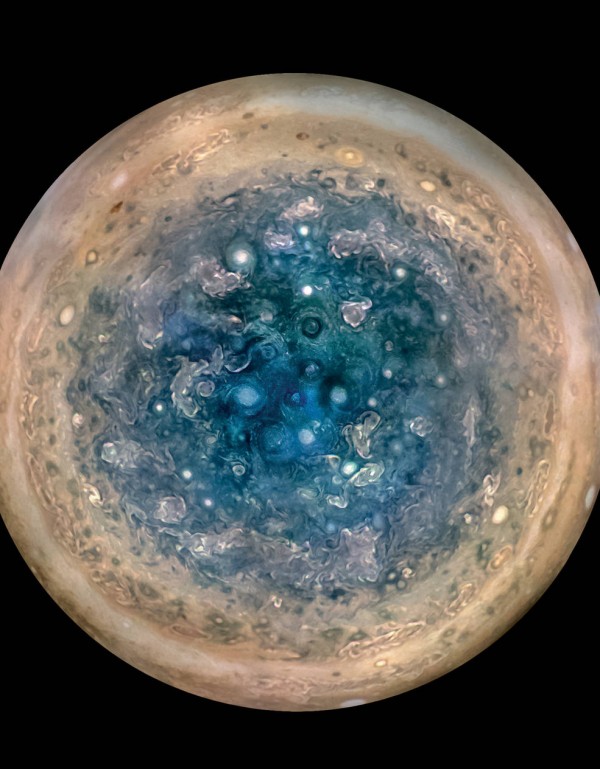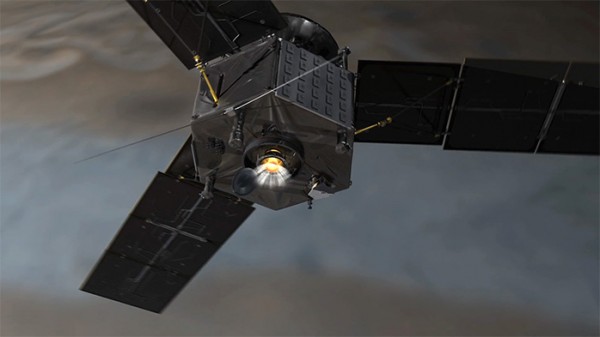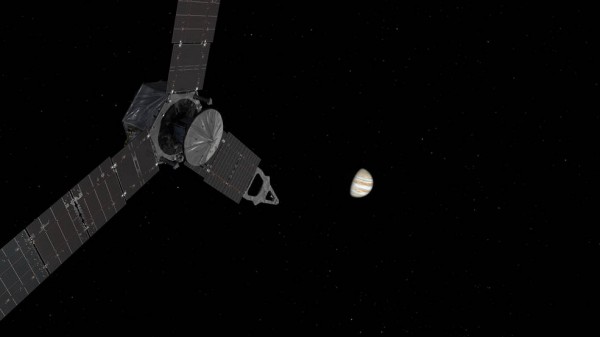Nasa's Juno mission to Jupiter reveals 'strikingly complex' planet
Juno arrived in the planet’s atmosphere in July 2016.

This is the latest image from Juno, Nasa’s scientific probe orbiting Jupiter.

Launched in 2011, Juno finally made its way into the atmosphere of the solar system’s largest planet in July 2016, and has just started to deliver its first scientific results.
Among the unexpected discoveries was the stark difference between the planet’s north and south poles – the latter of which is shown in the image above, complete with several densely-clustered storms.
“We knew, going in, that Jupiter would throw us some curves,” said Scott Bolton, Juno principal investigator from the Southwest Research Institute in San Antonio.

“But now that we are here we are finding that Jupiter can throw the heat, as well as knuckleballs and sliders. There is so much going on here that we didn’t expect that we have had to take a step back and begin to rethink of this as a whole new Jupiter.”
Bolton explained that scientists still need time to assess whether the storms at the planet’s south pole are of an ever-changing or permanent nature.

He said: “We’re puzzled as to how they could be formed, how stable the configuration is, and why Jupiter’s north pole doesn’t look like the south pole.
“We’re questioning whether this is a dynamic system, and are we seeing just one stage, and over the next year, we’re going to watch it disappear, or is this a stable configuration and these storms are circulating around one another?”
The Juno probe will now continue to deliver new discoveries from the “strikingly complex” planet before its eventual disintegration in Jupiter’s atmosphere on the 37th pass around its giant structure.





